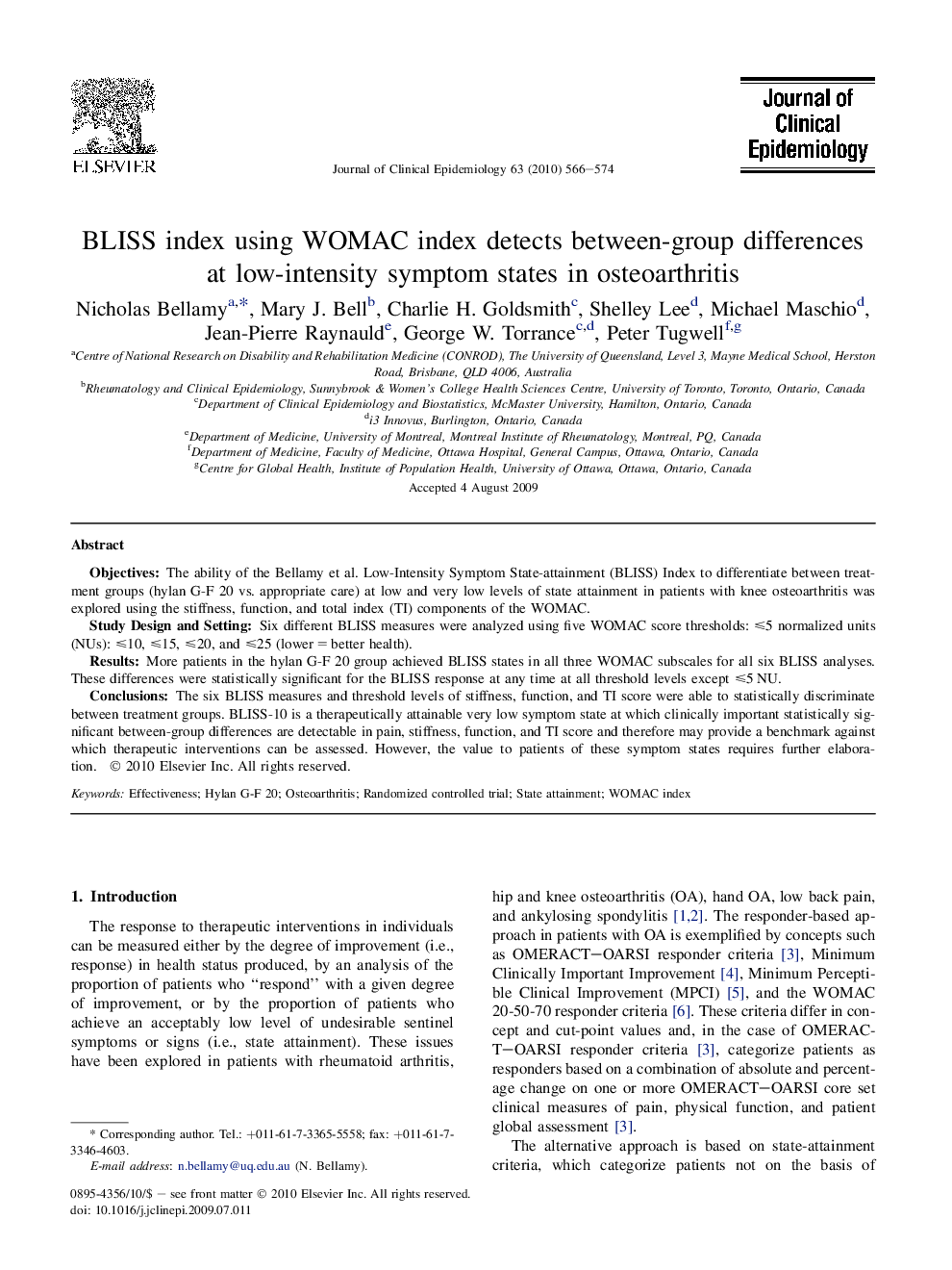| کد مقاله | کد نشریه | سال انتشار | مقاله انگلیسی | نسخه تمام متن |
|---|---|---|---|---|
| 1083199 | 950988 | 2010 | 9 صفحه PDF | دانلود رایگان |

ObjectivesThe ability of the Bellamy et al. Low-Intensity Symptom State-attainment (BLISS) Index to differentiate between treatment groups (hylan G-F 20 vs. appropriate care) at low and very low levels of state attainment in patients with knee osteoarthritis was explored using the stiffness, function, and total index (TI) components of the WOMAC.Study Design and SettingSix different BLISS measures were analyzed using five WOMAC score thresholds: ≤5 normalized units (NUs): ≤10, ≤15, ≤20, and ≤25 (lower = better health).ResultsMore patients in the hylan G-F 20 group achieved BLISS states in all three WOMAC subscales for all six BLISS analyses. These differences were statistically significant for the BLISS response at any time at all threshold levels except ≤5 NU.ConclusionsThe six BLISS measures and threshold levels of stiffness, function, and TI score were able to statistically discriminate between treatment groups. BLISS-10 is a therapeutically attainable very low symptom state at which clinically important statistically significant between-group differences are detectable in pain, stiffness, function, and TI score and therefore may provide a benchmark against which therapeutic interventions can be assessed. However, the value to patients of these symptom states requires further elaboration.
Journal: Journal of Clinical Epidemiology - Volume 63, Issue 5, May 2010, Pages 566–574